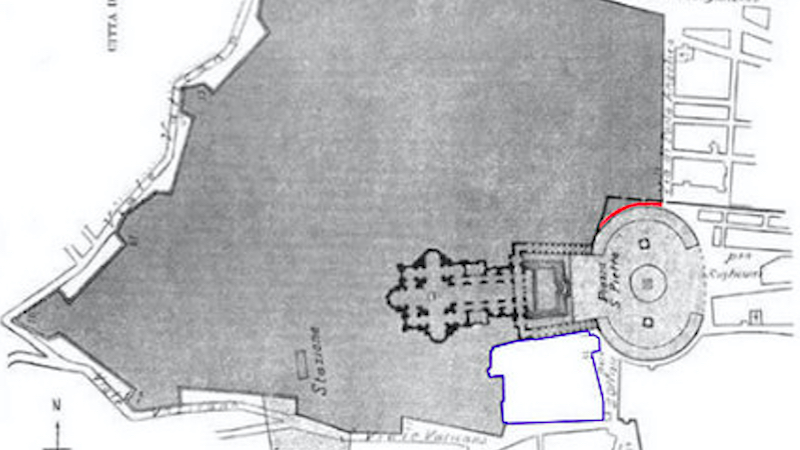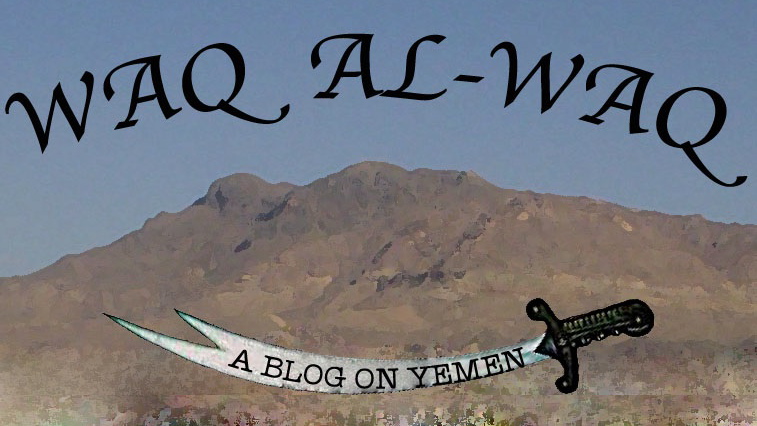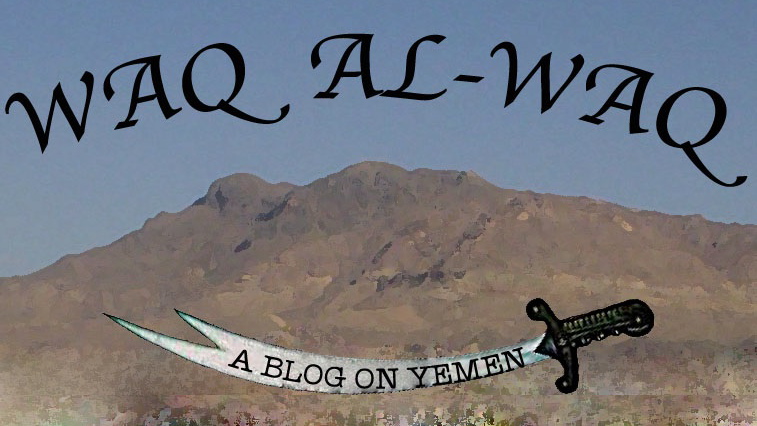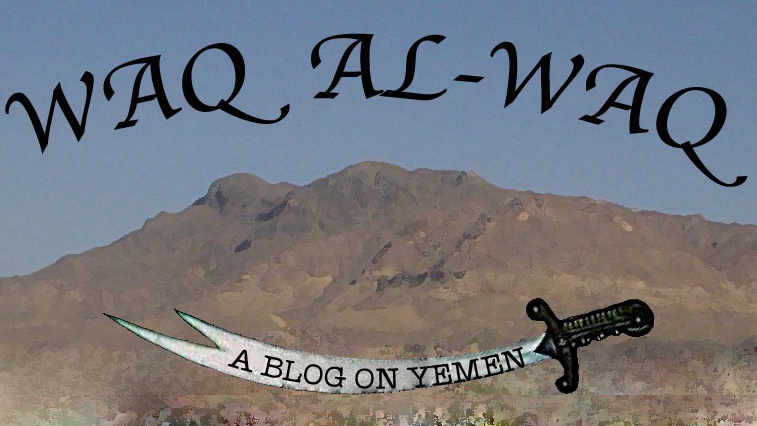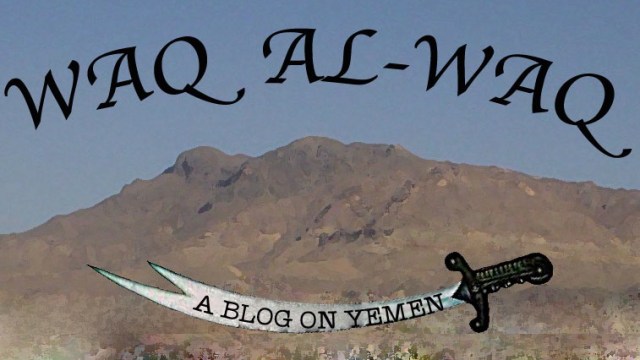Three Days in Yemeni History
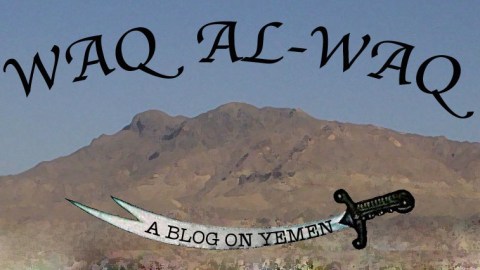
Sunday May 22 was unification day in Yemen, the anniversary of the date in 1990 in which north and south Yemen united to form a single state. It was also supposed to be the day that Salih signed a GCC-sponsored agreement, signifying his intent to step down from the presidency in 30 days.
He had reneged on previous pledges to sign the document, but that would all be forgiven if he could just force himself to sign this time. The GCC Secretary General Abd al-Latif al-Zayani had returned to Sanaa after leaving in a huff following the last time Salih stood him up. The JMP, Yemen’s weak but official opposition, had already had its five representatives sign the paper Saturday night at the request of the GCC, the US and the EU.
The only thing that was left was for Salih and the five representatives from his GPC party to ink the accord.
But before that could happen the diplomats – Zayani, the US ambassador, the UK ambassador, and several others – had to get out of the UAE Embassy where they were stuck. Besieged actually by a mob of pro-Salih supporters, who had found out their location and wanted to prevent them from making it to the presidential palace under the idea if the diplomats didn’t bring the document to Salih he couldn’t sign it.
The men with sticks and guns outside the embassy was fairly transparently government organized – Salih has done this before: create a crisis and then swoop in to solve it in the hopes that it will distract everyone from the issue at hand. This time it didn’t work. Diplomats on all sides stated that they would hold the government responsible for the safety of their people in the embassy.
Salih eventually dispatched two helicopters that brought most of the diplomats (although not the US ambassador) to the presidential palace. And then the fun began.
All five of Salih’s GPC representatives signed the accord, while Salih stood in the background, joking and smiling with the US ambassador. Suddenly, it seems, Salih had another last minute request. He wanted the JMP to come to the presidential palace and sign the document again, even though they had already signed it the night before.
According to version of the story, Salih claimed that this wasn’t a document to be signed behind closed doors, if the two sides were going to work together they needed to sign together.
The JMP refused, citing quite correctly the fact that they had already signed the document. Salih refused, and Zayani and the rest of the diplomats left the palace – failing to get Salih’s signature for the third time in just over a week. Mareb Press, which hasn’t been 100 percent accurate this week, has a version of what went on in the palace (Ar.) here.
By allowing his 5 representatives to sign, Salih was trying to show the international community that his party was ready to play ball – it was only those pesky opposition figures and their stubborn refusal to come to the palace that kept him from signing.
No one was buying it, however. Zayani went home, and the US criticized Salih – though not as strongly as the French, which called his failure to sign “irresponsible and unacceptable.”
– A brief aside here, as many of you know I have argued against GCC leadership on this, mostly because I didn’t think the GCC – even with US and EU backing – could get it done. Who knows if US political leadership would have, but I thought that had a better chance. Regardless, I was never quite sure what was going to happen to Salih if he didn’t sign. And it appears no one else was as well. Essentially, the international community just kept bringing Salih the document and asking him nicely to sign, but when he didn’t act as they hoped they were forced to scramble to come up with other options. And I’m not sure how many of those there are.
That night, Yemeni soldiers loyal to Salih began to stock pile weapons and munitions at the al-Ramah school near Shaykh Sadiq al-Ahmar’s compound in the north Sanaa neighborhood of al-Hasaba.
The government’s provocative actions continued the next morning. In a situation as unstable and as tense as Sanaa was on Monday – moving into the school was akin to infiltrating Sadiq’s territory.
Who fired first on Monday is impossible to know – and both sides point the finger at the other. According to reports Sadiq wasn’t at home at the time, but a number of opposition leaders were meeting at his house. In hours of fighting, at times with RPGs and rockets, 6 people were reported killed (Ar.) (although journalists had a difficult time confirming this) and more than 50 injured. As fierce as the fighting was – an airline office was set on fire, and tribal forces loyal to Sadiq took over at least one government building – it was basically limited to clashes between two of Yemen’s most powerful families: President Salih’s and that of Shaykh Sadiq al-Ahmar, the head of the Hashid tribal confederation.
A couple of years ago I wrote about the brewing tension between Yemen’s two Bayt al-Ahmars.
The only thing that gave me hope last night that the genie of war might, just possibly might be slipped back into the bottle was the fact that the fighting had been largely contained to soldiers loyal to President Salih and tribesmen backing Shaykh Sadiq. Thankfully, I thought, Ali Muhsin al-Ahmar – the powerful military general who defected to the protesters back in March with roughly half the regular army – hadn’t gotten involved. That plus the inevitable tribal mediation might mean that war could still be avoided.
I was also very interested to see how the Abu Shuwarib family came down in the conflict. For those that don’t know – Salih’s Sanhan tribe is also a part of the Hashid confederation, although clearly these loyalties can be broken (Ali Muhsin al-Ahmar is part of Salih’s Sanhan tribe and he defected). But that can get us pretty deep into the weeds.
Instead let’s return to the Abu Shuwarib family, I was curious about them, because they are often considered the “second family” in Hashid. The two patriarchs, Shaykh Abdullah al-Ahmar and Shaykh Mujahid Abu Shuwarib worked together well, but those bonds have frayed a bit as the younger generation has come to power (both shaykhs are now dead). Ahmar had 10 sons and Abu Shuwarib 4 – what makes the case of Abu Shuwarib’s son so interesting is that one of them is married to one of President Salih’s daughters. So I wanted to see which way the family and the brothers would go: would they support Sadiq, the relatively weak head of Hashid, or the president?
Tuesday we got our answer. Mediation committees visited Sadiq’s house in an attempt to defuse the situation. Among the mediators was Jibran Abu Shuwarib, the oldest of the 4 brothers.
At some point, and it isn’t clear to me when exactly this happened, troops loyal to President Salih shelled Sadiq’s house while the mediation committee was inside. This is a big no-no in Yemen, what’s known as al-Ayb al-Aswad. It appears that at least one shaykh, the young Muhammad bin Muhammad Abdullah Abu Lahum was killed, while a number of other prominent individuals including Jibran were injured and wounded. Even Ghalib al-Qamish, the head of Yemen’s Political Security Organization, and who was part of a mediation committee – although I’m not sure if this was the same one – was injured in shelling during the day.
This escalation by government forces will likely have far-reaching consequences. Already the fighting on Tuesday had been more intense than Monday, with tribal forces shelling the Ministry of the Interior and taking over different government buildings.
As I write, shelling is still going on around Sadiq’s house, and there are rumors that the 1st Armored Division is preparing for war. Meanwhile, tribesmen loyal to Sadiq are rushing south from Amran towards the capital to defend their shaykh, while the US ambassador is reportedly preparing to depart the country.
It isn’t clear where this headed, or what can be done from the outside, probably not much. Salih has let slip the dogs of war. This is likely to get worse before it gets better.
